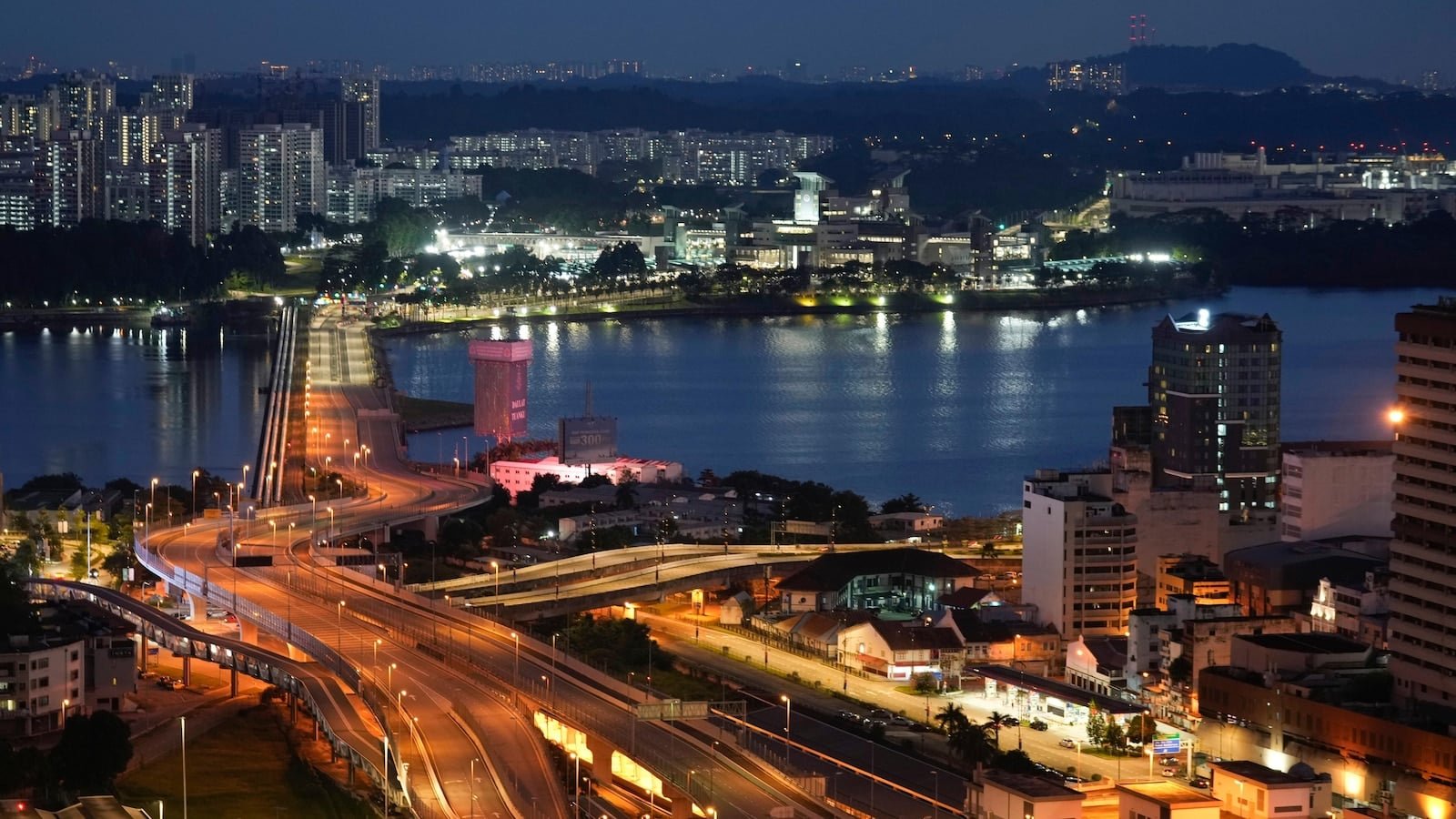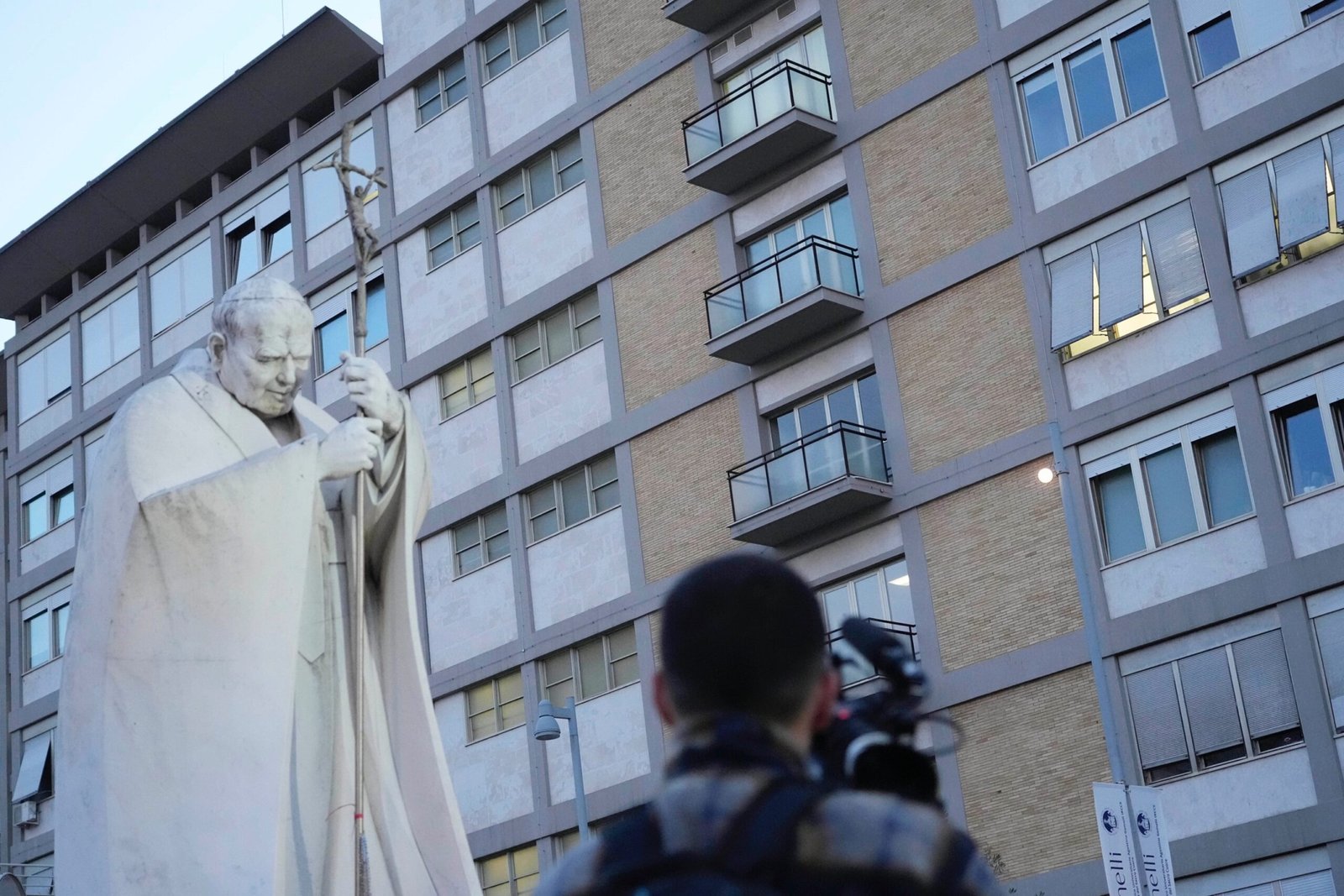Johor Bahru, Malaysia – Winson Lau has always had contingency plans. But I was not prepared for data centers.
Lau depends on water and electricity to operate its prosperous export business in the province of Malaysia Johor, where a tropical fish caleidoscope in aquarium rows, including albino fish with red points that can obtain up to $ 10,000 of the collectors. Its contingency plans in case of an interruption imply an intricate purifying wastewater system through friendly bacteria and an alarm system to quickly change to backup feed.
But these measures cannot compete with gigantic, power and thirst centers that are being built in Johor. The province is on its way to having at least 1.6 gigawatts of data centers at any given time of almost nothing in 2019, which makes it the fastest growing data centers market in Southeast Asia, According to a report published in April.
Data centers are large buildings without windows full of computer racks that need a lot of electricity. To avoid overheating, they depend on energy intensive air conditioning systems using pumping water. Increasingly used by technological companies to execute artificial intelligence systems, the energy demand for future facilities in Malaysia can increase to more than 5 gigawatts by 2035, According to the investment bank of the Kenanga Investment Bank of Malasia. This is more than half of all the renewable capacity of Malaysia in 2023.
According to the International Energy Agency, more than 95% of the energy available for Malaysia in 2022 was fossil fuels. The country is now the fifth largest liquefied natural gas exporter worldwide. And with planned renewable projects, Prime Minister Anwar Ibrahim He said in September that the country was “confident in a surplus of energy” to feed great projects and continue exporting.
But Lau does not like the possibilities that their own harvest business competes against energy giants financed abroad. Even without data centers, Malaysia is susceptible to energy interruptions due to storms, including one that lasted 30 minutes last year and killed 300,000 fish, which cost Lau more than $ 1 million. He is concerned that data centers will result in longer interruptions.
To survive, he is moving to Thailand and already explores potential locations for a new fish farm.
“Big Data Center is coming and there is a shortage of power,” he said. “It will be crazy.”
Malaysia is betting that the potential economic growth of data centers justifies the risk. Once promoted as an Asian tiger on the cusp of becoming rich, its industries were reduced in the late 1990s after Asian financial crisis. Since then it has languished in the average income trap. The data centers, the government expects, will modernize their economy and indirectly create thousands of well -paid jobs.
But experts are concerned that Malaysia, and others such as Vietnam, Indonesia and India, compete for the investments of one billion dollars of technological giants, can be exaggerating the transformative capacities of the data centers that also have a price: the Data centers engulf the land, water and electricity while creating much less jobs that promise. Most data centers provide between 30 and 50 permanent jobs, while the largest create 200 jobs, according to a report by the First of the good non -profit purposes.
Add to this the rapid increase in the use of energy and water and some experts such as Sofia Scaserra, who investigates digital economies in the group of transnational experts Institute, based in Amsterdam, said that technological companies that exploit resources in countries in countries poorer while extracting data from their populations to enrich themselves is similar to “digital colonialism.” He compared data extraction with silver mining in Bolivia, which enriched colonial Spain but left nothing to Latin America.
“They are extracting data in the same way. The data does not even leave (behind) taxes, ”he said.
In fact, only a small portion of the ability of the Malaysian data center is actually for Malaysian users. Through a network of submarine cables that fans go into the world, they serve Oriental Asia, China and Europe. And the data centers themselves are administered by foreign companies such as America’s Equinix and Microsoft, as well as the GDS holdings of Chinese competition that works with technological giants such as Alibaba.
These data centers are also in the first line of the competition between the United States and China. Shortly before leaving office, the administration of the president of the United States, Joe Biden, New proposed rules This would limit the advanced IA chips exports made by US companies such as NVIDIA, part of a strategy to deprive China and other US adversaries to obtain access to AI technology through data centers in places such as Southeast Asia and Middle East. Although it is not clear if the Trump administration will retain the policy, which has not yet entered into force, GDS Holdings saw its shares more than 18% on the day of the announcement.
For now, artificial intelligence is promoting the hunger of even more data centers, with technological companies that seek larger and more cheapest sites around the world as part of a “global strategy,” said Rangu Salgame, president and CEO of the group Digital Princeton of Singapore, which is building a site of 170 megawatts in Johor. Data centers with more than 40 megawatts generally need land of the size of seven soccer fields, approximately sufficient energy for 36,000 US houses, according to the data center service provider Flow data centers.
That is expensive to build rich nations like the United Statesthat over time has built more data centers than any other country, but where the land has a high price. He entered Malaysia, with his economic land, excessive energy capacity and tax incentives. The country was the fastest growing data centers market in Asia Pacific in the first half of 2024, according to The world firm of real estate Cushman and Wakefield. This makes Malaysia the eighth market for the largest data centers in terms of operations and the fifth largest behind China, India, Japan and Australia when projects that are already in process are counted.
Malaysia worldwide ranks 14 in terms of operational capacity, even smaller than Frankfurt, London, Amsterdam, Paris and Dublin, but is on the way to being among the 10 main markets in five to seven years, according to Pritesh Swamy, which Heads research on data centers in Asia for real estate firm Cushman AND Wakefield.
“We are talking about a region that really grew at a pace that has not seen anywhere in the world,” said Salgame.
Next to Malaysia is Singapore, which stopped the construction of new data centers in 2019. The moratorium was concerned with the concern that the infrastructure that achieves energy was striving the limited resources of the small country. In 2019, the data centers consumed 7% of the total electricity in the city-state that matters both energy and water while they aim to reach zero net emissions by 2050. They have been trying to build data centers in a way Sustainable since 2022, when the moratorium ended.
Meanwhile, Malaysia has intervened to fill the void, attracting investments of more than $ 31 billion, three times the investments by 2023, in the first 10 months of 2024, according to investigation by real estate firm Knight Frank. Johor already has 22 data centers mostly foreigners that cover more than 21 hectares, according to the research firm Baxel. That is the equivalent of almost 40 soccer fields, although not all data centers are operational.
The data centers that are executed are anonymous from the outside. But they can be identified by the revealing signs of spike wire, CCTV cameras and patrol safety protectors. In other places, a thicket of cranes and workers that operate construction machinery are transforming the landscape into the sleepy province.
Salgame said he expected the data centers to accelerate the growth of clean energy and experts such as Putra Adhiguna of the Tank Tank Institute, based in Yakarta, agreed that this could happen, but warned that the large volume of unforeseen future demand complicates The transition.
“Add the data centers on that, it becomes much more challenging,” he said.
Tropical Malaysia is warmer than the countries that were Initially preferred by data centers, including IrelandAnd it would require more water and power for cooling, said Alex de Vries, the founder of Digiconomist, a research company that studies the involuntary consequences of digital trends. He said that these companies are moving to new countries after their promises of economic growth are “empty.” And although new solar or wind farms can be built faster than other forms of energy, the data centers need a lot of electricity from the Atiste.
“These great technological companies are trying to distract you from really simple mathematics,” he said.
Malaysia acknowledges that the energy demand of the data centers is “substantial”, but believes that Johor’s rise as a “power center power” will make it a “key player in the Southeast Asia digital ecosystem,” he said, he said Malaysia’s investment, trade and industry minister, Tengku Zafrul Azfrul Azfrul, in an email. He added that Malaysia was writing efficiency guidelines for data centers and has a policy to allow them to buy clean energy directly to producers.
But concerns are increasing among residents about the possible shortage of water in the future, echoing the concerns of other developing countries such as Chili. Malaysia, like much of Southeast Asia, is at risk of extreme weather, including drought, according to a 2022 UN climate change report. Francis Hutchinson, an analyst at the Iseas-Yusof Ishak Institute of Singapore, said Johor has faced recent interruptions and new stressors, such as a growing population and aquatic parks to boost tourism, could exacerbate the crisis.
“Water, more than power, is a potential problem,” he said.
______
The AP Eileen NG writer contributed to Kuala Lumpur, Malasia and Matt O’Brien in Providence, Rhode Island contributed to this report.
______
Associated Press’s climatic and environmental coverage receives financial support from multiple private foundations. AP is solely responsible for all content. Find AP’s standards To work with philanthropies, a list of followers and coverage areas financed in Ap.org.





